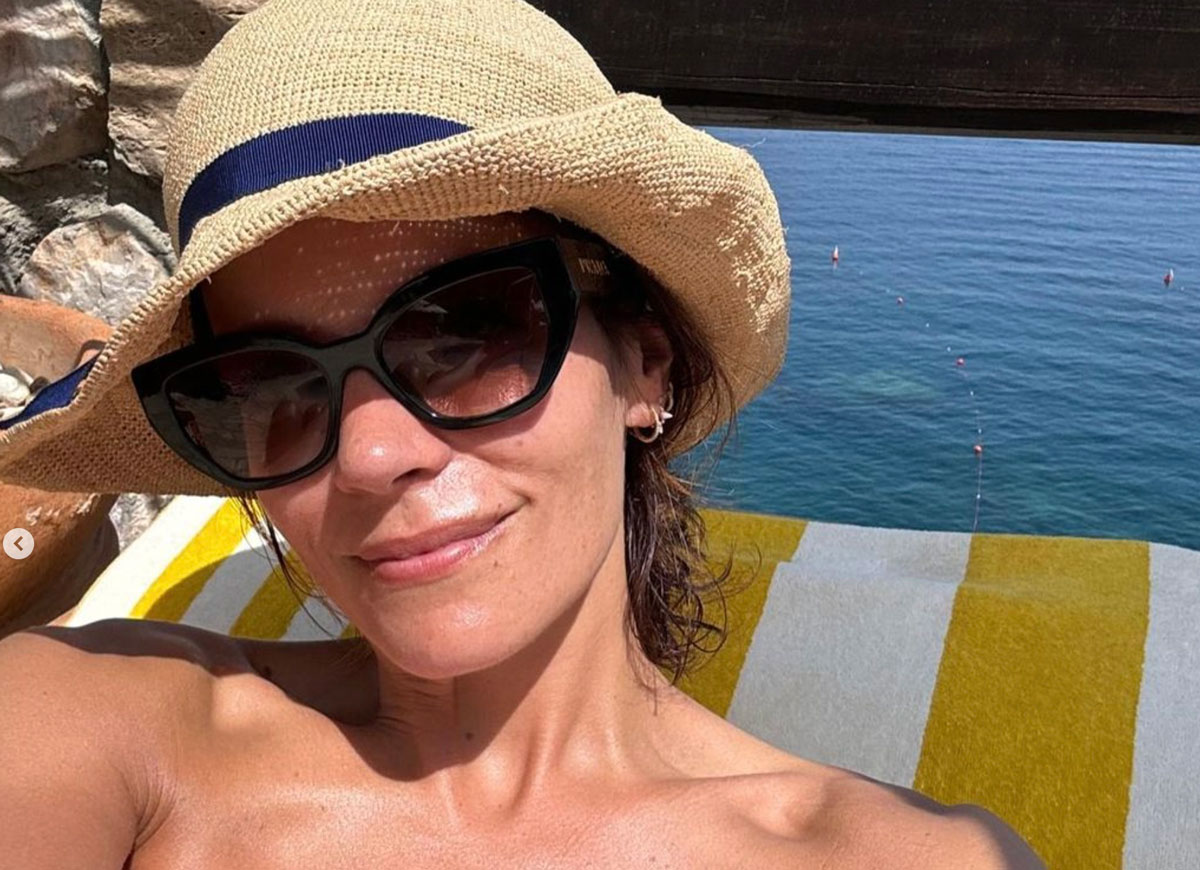Don the Verb
Dark glamour is the specialty of Don The Verb, a line designed by Hanna Astrom and Yanina Landsaat. Simple in shape and decisive in detail, the clothes are clean-cut, elegant yet functional. With languid gowns and timeless tailoring, the focus is on the classic feminine silhouette; think pinched-in waists, vampy red lipstick and cigarette holders. Hanna and Yanina's store on Manhattan's Lower East Side, boasts personalized tailoring, vintage gems as well as a section devoted to the hip, ready-to-wear line by Hanna. A Mecca for vintage and contemporary clothing from the past 100 years of design, Don the Verb is redefining the consignment shopping experience. Uinterview grills Yanina about everything from flea markets to the Ancient Egyptians.
Yes, definitely, I never really played with dolls or toys. I played with my Mom’s jewelry and her clothing. She noticed it also, that from a very early age I just didn’t have any interest in dolls or anything like that, I was just always very passionate about her clothes, and was always into it, I could put items and colors together. My Mom really inspired me, she really cultivated that within me, and when I was eight years old, I pretty much knew what I wanted to do.
Not even that, it was more like helping her put her outfits together… I would steal stuff from her closet and catch crayfish in one of her beautiful dresses. I got into a lot of trouble later of course, but you know, clothes were my fantasy world. If you want to know everything about my fashion background, I started working very early – I started doing retail jobs when I was like, 13 and 14. I was just really into it! And so then when I was 22 I decided to move to New York. And then I got a job almost instantly in the city, and was working in marketing and development for a while, then I met my husband, and he’s a minimalist, so I had to clean out most of my closet before we moved in together. So I started selling my clothing – I shared a booth at a flea market with my friend, just selling my clothing. I did it for a month, but then women would start following me, asking for business cards. So I took the summer off, came up with a business idea of picking up clothes on a consignment basis during the week and all over town, and selling it at the flea market – and that’s how the business grew.
I was three years old when I moved to Baltimore, from Russia.
No! Not at all actually. I’m going to be going back for the first time since leaving it this summer, I think.
Absolutely I did, my whole life! When I was a kid, I had a very confusing childhood, and I always tried to be so American, I wanted to be so American, up until I was about 11 or 12, and then I started to embrace my background, because I came to feel very lucky that I was different. Before I hated being different – I really wanted to fit in, you know? I grew up during the Cold War in the 80’s, and I would get little paper airplanes flown up onto my window sill saying, “Go back to Russia, you Commie!”
Yeah! It was very real! Very true. I would come home crying, and my Mom would say, “The difference is, these kids don’t know where they’re from, but you do.” She said, “You’ll find out that that is a benefit when you get older,” and she was right, because when I got to High School I realized how lucky I was.
Absolutely, all black! I remember eating breakfast one morning, and hearing my Dad asking my Mom, “Why does she wear so much black?” And my Mom said, “Just let her be, she’s just trying to express herself.” But I’ve been wearing black for years…I’m just looking at myself in the mirror, and I’m wearing all black [laughing]! In the summer time, I’ll have on a pump of color – a strong pump of color, but I never wear color next to my face.
Well our designs veer on vintage, the details might be inspired by vintage details, but they’re executed in a very modernist way, and that’s something that Hanna and I really share together, is a sense for shapes, drapery, the classical silhouettes that will go forward forever. The 1920s, 1930s, 1940s, the Erte Sketches and so on are one inspiration, but the inspiration for our latest collection was Medieval Times, because a lot of the clothing from that era is very similar to our aesthetics in that they’re very drapey, very shape-based; also very uniform-based shapes. We create uniforms basically. When we’re designing a piece, we think to ourselves, “Wow! We would wear this every day! Just with a different pair of shoes, you can completely switch it up and make it different. We make every piece convertible – with every piece, we urge the wearer to play around with it and be creative - every piece we design can be worn in several different ways. If you look at our fall collection from Fall ’08, we have a coat called “The 18-Way Coat.” You can actually wear it four different ways, but we thought it was funny to call it “The 18-Way Coat.” And for our spring ’09 collection, we did a series called “Survival Series,” and the whole collection was extremely convertible.
The reason why we choose some of these eras is because the toughness of them. They’re tough, but still extremely feminine at the same time. For instance, the Egyptian revival is very modern – it’s where the Erte Sketches come from. If you look at Egyptian clothing, it’s extremely modern, extremely modern, for the time, and that’s an example of that goes forward forever.
We get a lot of our inspiration from the streets. We get a lot of our inspiration from museums and books. A lot of our inspiration is not from fashion. People ask us if we read a lot of magazines, in fact we don’t. Older magazines for sure, but we mostly draw our inspiration as I say from museums and books, from movies and science, that’s our overall feeling. Every designer has an overall feeling or common thread, but the execution is always very different with every designer, and that’s what makes fashion so exciting right now.
In a way, it’s armor but it’s not so much literal armor. A lot of our pieces are about subtle detail. We’re about not showing too much, having a little bit of mystery, and that’s really our armor.
Absolutely! There is a lot of power in mystery. There’s a lot of power in not showing too much immediately, and unwrapping gently.
The Fall ’09 collection is dark, with a hit of enlightenment. We wanted to bring a light or a renaissance to it. It contains a lot of our signature pieces, and everything was done in very dark fabrics.
Well, darkness is a common thread of ours, anything we do has darkness added to it. But everything we do, we try to make it very pretty and wearable too. Another thing we do is try to make pieces that are androgynous and trans-seasonal. That’s where the whole uniform idea really comes into play. We want to make clothes that you can wear any season of the year: there are climate changes!
Yeah. I wouldn’t say archetypal, but we try to dress woman who want to play with clothes. It’s not about the piece itself, it’s about the wearer, and who they’re going to make it work for them.
I think definitely one of our coats for Fall – people should look into our coats for Fall, and also one of our signature dresses, and our pants too, we did some amazing acrobat pants for Fall which you can wear in so many different ways, and if you check out the Look Book, you’ll see!
RELATED ARTICLES
Get the most-revealing celebrity conversations with the uInterview podcast!








Leave a comment